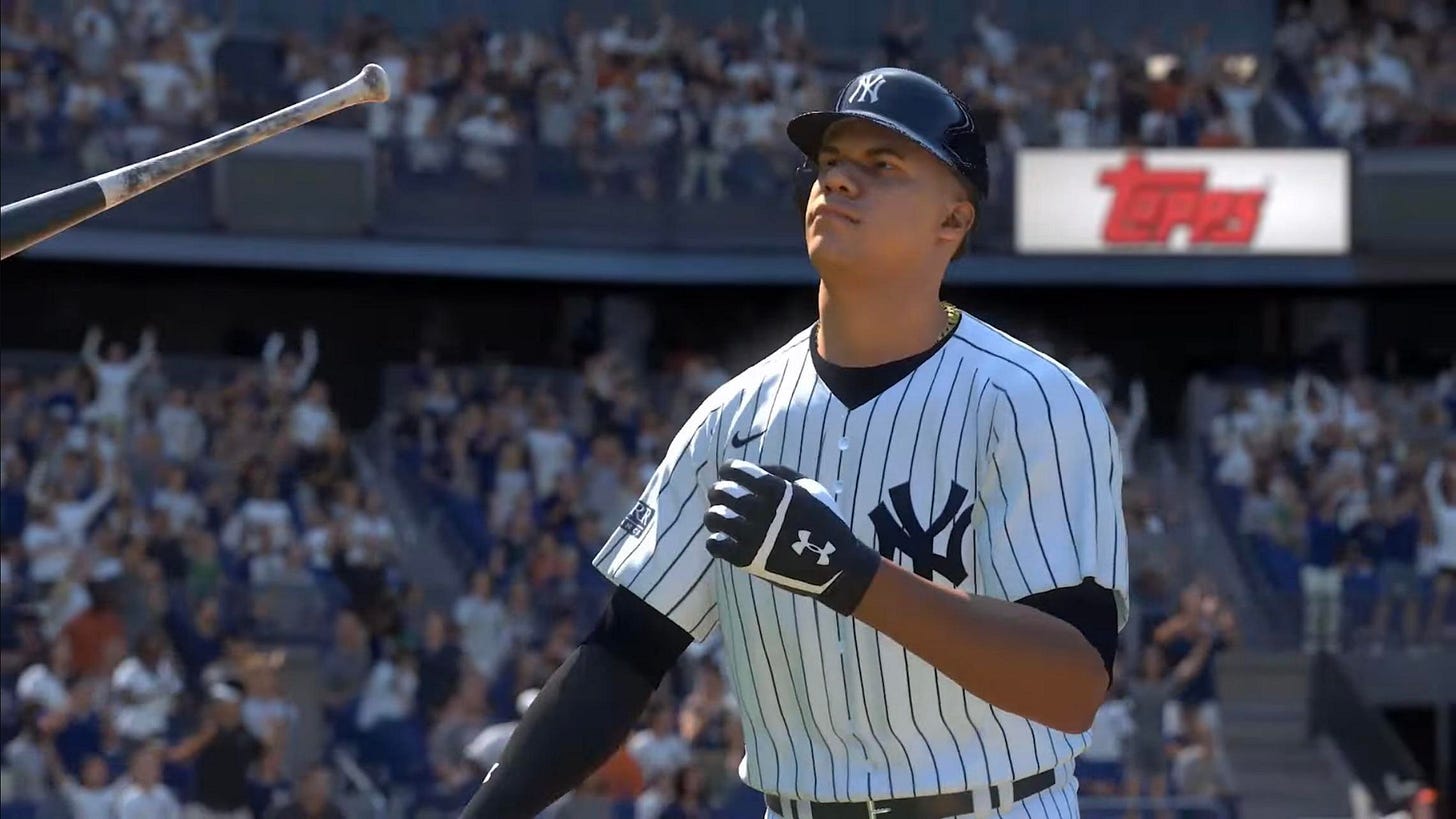Welcome to the first installment of investing articles for Perfect Perfect: An MLB the Show Substack. Each week, I’ll provide insights into the ever-changing card market to help you boost your stub balance throughout the season.
Also, make sure to follow me on Twitter and Instagram for continuous updates.
Over the past few cycles of MLB, I’ve grown my stub account through low-risk investments, whether from Live Series upgrades, supercharged players, inning bosses (though this is sadly gone now), and more. I’m here to help you better understand the system and aid you in growing your stub count!
Before delving into my five tools for ‘Investing 101,’ let’s explore how I’ve earned stubs in previous MLB The Show cycles and why YOU should follow along.
In 2017, I dove deep into Diamond Dynasty and instantly became hooked on the mode. Transitioning from playing MUT for several years, I found it refreshing to be able to buy stubs and purchase the players I wanted rather than relying solely on opening packs. Like everyone else, I sought different ways to earn stubs without using a credit card. One of my initial methods was investing in inning bosses. It took a bit of time, but I realized they consistently increased in price after the program ended because you could lock in the three bosses in the new program for progress advancement.
It was one of the easiest ways to make stubs for a couple of years, providing consistent results. I could turn 400k into 800k within a few days, as long as I was patient. In the last week of the program, when players were reaching the last boss and selling, I would buy and stash them for about a week. When new inning bosses were announced, players would try to repurchase one or two for the collection, and I’d be there selling my stash for sometimes double what I bought them for. It was simple, but sadly, they moved away from requiring the bosses to be collected to advance in new inning programs, so I had to find a new approach.
I’m not a big fan of flipping; I know some guys love to do it, but I don’t have the attention span to sit there for 3 hours processing 3000+ orders. Don’t get me wrong; if you can do it, do it! It’s a great method. It’s just not for me. That’s where I found Live Series upgrades! I slightly dived into MLB 22, making over 600k and just doing it off notes on my phone:
Carlos Rodon was a major call that year, making almost 3x what I paid for him and he got me hooked for the rest of the cycle.
MLB ‘23, I decided to go bigger! I created an Excel sheet of my investments, knowing exactly who I was investing in at any given moment and updating on the fly when I would pull or buy someone. So, I decided to create a Twitter account in March, and thanks to all the followers, it helped me grow in a few short months! Now MLB 24 will be bigger, and the GOAL is 2.5 million in stubs this year from investing.
Here are my 5 key tips when it comes to ‘Investing 101’:
Understand quick sell values
We all know diamond at 85 is 3000, and what many players focus on, but did you know 86 is 3750 or 83 is 1200? Understanding the quick sell values for each overall (which I drop pictures of on Twitter) is crucial for my next key.
Understand your risk
If you know your quick sell values, you can begin to see which players ARE high risk for your stubs. I am all about LOW RISK and grabbing guys at or near quicksell values. (I.e., Vlad Jr., as an 84 ovr, has a QS value of 1500 stubs; buying at 2900 stubs for him to go to 85 for 3k or 86 for 3750 stubs is a high-risk play. Risking almost 1400 stubs per Vlad bought just to make 100 or 800 stubs for the boost).
Patience
You have to be patient with this kind of stub-making method. It won’t happen overnight, as we’re playing the long game. Jose Siri in 2023, for me: I bought 51 of them for 75 stubs each, QS them for 900 stubs each, and made 42k stubs. This took six weeks to happen, though, due to waiting for a couple of updates to get to this point.
Have a notepad or spreadsheet
This will help you keep track of your investments while also tracking how many stubs you have invested and how much you have in each player. Writing/typing it will help you learn the values but also have a better feel on if you want to get out of the player, if he takes a turn, or be close to a collection and be able to sell an investment off.
Take 5 minutes to take a breath and decide on what to do next:
You can do a lot in just 5 minutes of research. Look at your target, compare season stats to player card attributes, and assess if the risk is too high (QS value to buy value).
Luckily, this method is two or three weeks based, so it’s not a big deal to just wait over a weekend, and things can change. For example in 2023: Luis Robert, looked prime for a great early candidate to be a long-term investment. Was meh the first few months or so of the season, then he went OFF over a weekend and turned his whole season around.
Behind the Scenes
The gang at North Shore Nine (an excellent Pirates-related blog that I sometimes write for) posted on Twitter this behind-the-scenes video of Marco Gonzales getting his face scanned by the folks at MLB the Show.
Holy Shit
I did the math and that’s an average of about 6.3 wins in Ranked Seasons every day for almost an entire year. And, as you can see by Frostie’s in-human .914 win percentage, he was not tanking games to play lower competition. These are high-level games on Legend against elite competition. Wow.
Not Sure I See the Resemblance
 Tiktok failed to load.
Tiktok failed to load.Enable 3rd party cookies or use another browser







